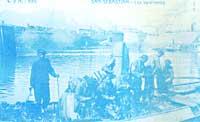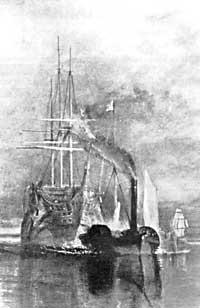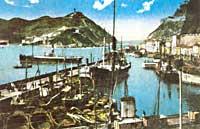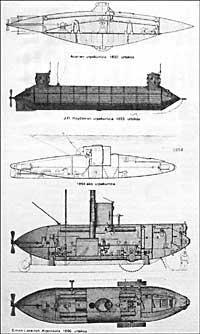History of Shipbuilding VIII. Vapors
1986/12/01 Azkune Mendia, Iñaki - Elhuyar Fundazioa Iturria: Elhuyar aldizkaria

XIX. In the early 20th century, around 1820, a new and beautiful type of sail was built in the United States. The new type of boat was named "cliper": The cliper was very slender, light and fast. On the one hand it had little space to carry the load, and since it had many and large candles, the sea mile “cut” faster than the lightning (hence the name of cliper; clip off=cut). They were widely used in trade between Australia, China and the United States.
Later they began to manufacture larger sailboats with steel hull. They could carry more cargo (up to 5800 tons), but they did not need more sailors than clipers.
However, these sailboats began to disappear as soon as the vapors formed. The shipyards of Euskal Herria also suffered a drastic descent and, except for the Ibaizabal, the others were destroying one by one. The remaining shipyards were reinforced much later.
But we came to the creation of the vapors and see where the first steps of these vessels were taken.
Although in 1690 Papin thought that perfume might be used on ships, the first project was presented by Jonathan Hulls in 1736.
In 1775, Jacques Constantin Perrier first supplied a steam engine to a boat. Claude Jouffroy showed in 1783 that vapors could go against the upstream stream.

In 1807, Robert Fulton extended the vapors to maritime navigation, surpassing previous test levels. And finally, Francis P. Smith established the propeller in 1836 for the propulsion of the ships.
But during that time other sailors marked through the vapors. For example, Captain Robert Stevens first sailed the sea in steam and Pierre Andreil first crossed the English Channel in 1816. Moses Rogers crossed the Atlantic on a boat with candles and steam engine, and then R. Roberts with just a bottle.
Before the invention of the steam engine, some scientists, such as Valturio and Leonardo da Vinci, took care of the mechanical propulsion of the ships, had their projects. XVII and XVIII. for centuries they were experimented with mechanical propulsion, especially in France. In 1753, the French Academy of Sciences organized a competition to create a "machine" to replace the wind power on ships.
The first steam-powered boats were French, despite the failure of the shipping companies. The Count of Follenay and the Count of Auxirón, in 1774 wanted to try their first steam on the Seine River, but the boat spoiled on the eve.
The following year, in 1775, Jacques Constantin Perrier triumphed with his boat on the Seine River. But since his steam engine had little power, he preferred to abandon the project.
In 1783, however, Claude Jouffroy was more successful. He placed two two-cylinder steam engines on the wheel ship. It also had a chain drive of 182 tons.
Later, XIX. At the end of the 20th century, English and North Americans tried to improve vapors. Robert Fulton analyzed the previous trials and solved the technical problems by obtaining steam.

Fulton was born in Pennsylvania, North America. He travelled to Britain and France for being concerned about steamer boats. In France, on the Seine River, he built a ship called "Clermont". He had a machine of eight horses and two wheels of ten blades. This boat deteriorated and sabotage could be the cause of deterioration.
Fulton and his associates did not snatch, and in 1803 the "Clermont" went upstream of the Seine River with only three sailors. But the French government did not give him much ease and Fulton returned to North America. There he managed to acquire a 24 horse steam engine, but without being able to find funding for his project, he spent time. But finally, he was assisted by anonymous bankers and in 1807, another steamer on the East River, as he did four years earlier on the Seine River.

Gai honi buruzko eduki gehiago
Elhuyarrek garatutako teknologia





